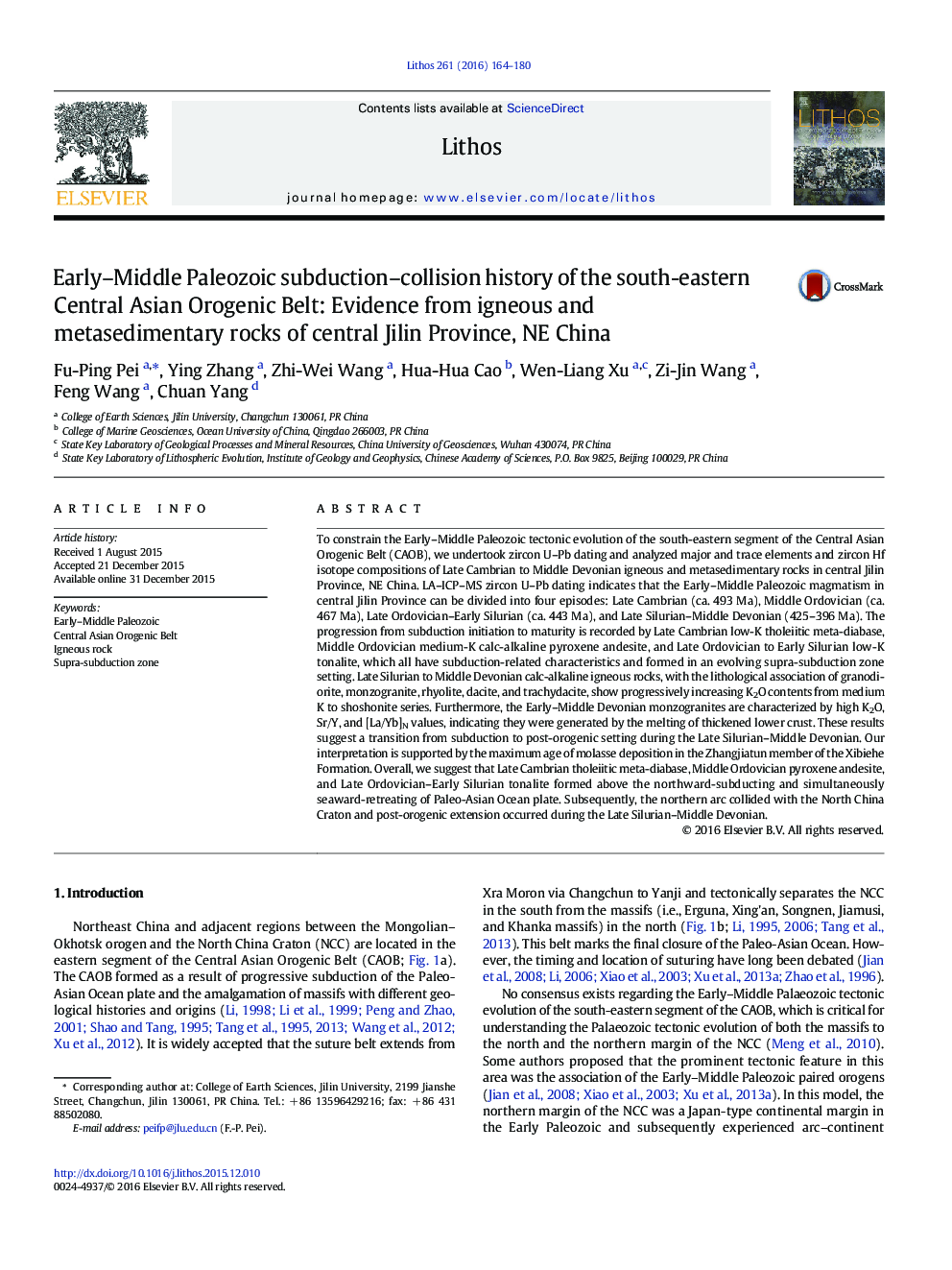| کد مقاله | کد نشریه | سال انتشار | مقاله انگلیسی | نسخه تمام متن |
|---|---|---|---|---|
| 4715553 | 1638643 | 2016 | 17 صفحه PDF | دانلود رایگان |

• Early–Middle Paleozoic igneous rocks in central Jilin Province can be subdivided into four stages.
• Є3 low-K tholeiitic meta-diabase and ultramafic rocks reveal subduction initiation.
• O2 high Mg pyroxene andesite and O3–S1 low-K tonalite mark an evolving supra-subduction zone setting.
• S3–D1 and D1-2 igneous rocks suggest a transition from subduction to post-orogenic setting.
To constrain the Early–Middle Paleozoic tectonic evolution of the south-eastern segment of the Central Asian Orogenic Belt (CAOB), we undertook zircon U–Pb dating and analyzed major and trace elements and zircon Hf isotope compositions of Late Cambrian to Middle Devonian igneous and metasedimentary rocks in central Jilin Province, NE China. LA–ICP–MS zircon U–Pb dating indicates that the Early–Middle Paleozoic magmatism in central Jilin Province can be divided into four episodes: Late Cambrian (ca. 493 Ma), Middle Ordovician (ca. 467 Ma), Late Ordovician–Early Silurian (ca. 443 Ma), and Late Silurian–Middle Devonian (425–396 Ma). The progression from subduction initiation to maturity is recorded by Late Cambrian low-K tholeiitic meta-diabase, Middle Ordovician medium-K calc-alkaline pyroxene andesite, and Late Ordovician to Early Silurian low-K tonalite, which all have subduction-related characteristics and formed in an evolving supra-subduction zone setting. Late Silurian to Middle Devonian calc-alkaline igneous rocks, with the lithological association of granodiorite, monzogranite, rhyolite, dacite, and trachydacite, show progressively increasing K2O contents from medium K to shoshonite series. Furthermore, the Early–Middle Devonian monzogranites are characterized by high K2O, Sr/Y, and [La/Yb]N values, indicating they were generated by the melting of thickened lower crust. These results suggest a transition from subduction to post-orogenic setting during the Late Silurian–Middle Devonian. Our interpretation is supported by the maximum age of molasse deposition in the Zhangjiatun member of the Xibiehe Formation. Overall, we suggest that Late Cambrian tholeiitic meta-diabase, Middle Ordovician pyroxene andesite, and Late Ordovician–Early Silurian tonalite formed above the northward-subducting and simultaneously seaward-retreating of Paleo-Asian Ocean plate. Subsequently, the northern arc collided with the North China Craton and post-orogenic extension occurred during the Late Silurian–Middle Devonian.
Figure optionsDownload as PowerPoint slide
Journal: Lithos - Volume 261, 15 September 2016, Pages 164–180